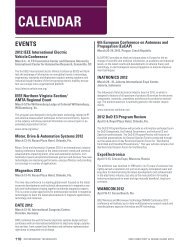2011 EMC Directory & Design Guide - Interference Technology
2011 EMC Directory & Design Guide - Interference Technology
2011 EMC Directory & Design Guide - Interference Technology
You also want an ePaper? Increase the reach of your titles
YUMPU automatically turns print PDFs into web optimized ePapers that Google loves.
shielding / cables & connectors<br />
Figure 8. Combination of a transmission line (TL) and method of<br />
moments (MoM) code for solving the irradiation problem.<br />
Num e ric a l S o l u t i o n of C o mpl e x <strong>EMC</strong> Probl e m s<br />
where D=[I 1<br />
(γb) K 1<br />
(γa)-I 1<br />
(γa) K 1<br />
(γb)] and γ=√jωμ(σ+jωε),<br />
while a and b are the inner and outer radius of the shield<br />
respectively. The electrostatic shielding is much greater than<br />
the magnetostatic shielding, and as a result, the transfer<br />
impedance term dominates at low frequencies. This fact has<br />
led many investigators to neglect the transfer admittance<br />
term in <strong>EMC</strong> coupling problems.<br />
For braided shields as in Figure 7, the model proposed<br />
by Kley [14] is very popular. The coupling mechanism<br />
giving rise to the transfer impedance and admittance are<br />
enhanced, due to the field penetration through the shield<br />
apertures. At low frequencies, the electrostatic shielding of<br />
the braid is much better than the magnetic field shielding<br />
(Y T<br />




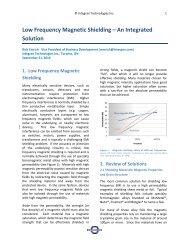

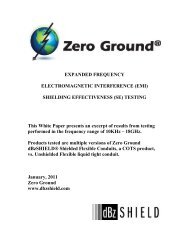
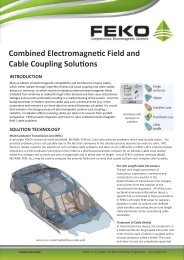



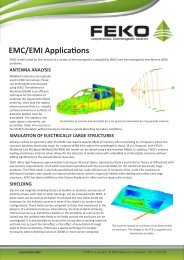
![[ thursday ] morning sessions 8:30 am-noon - Interference Technology](https://img.yumpu.com/23176841/1/190x247/-thursday-morning-sessions-830-am-noon-interference-technology.jpg?quality=85)
